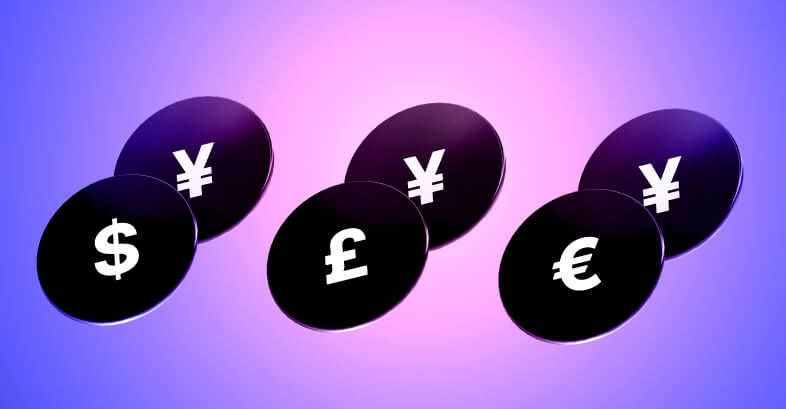Best Time to Trade and Top Currency Pairs for the Asian Trading Session


Even though the Forex Market is open 24 hours a day, we can break the daily trading period into four major trading sessions where forex traders can negotiate currency pairs: the Sydney session, the Tokyo session, the London session, and the American session.
The Asian trading session, also known as the Tokyo session, is the one that starts it all off after the weekend break. Even though it is much quieter compared to the London and New York sessions, it still comes with solid opportunities, especially if you know what you’re doing and when to strike.
This Asian session provides favorable trading conditions for people who prefer calmer markets or are interested in specific currency pairs that align better with economic events happening during the Sydney and Tokyo sessions. Although less volatile than North American sessions, for example, it might offer a path toward successful trading for those who prefer a “slower” market, with less volatility. When it comes to key Forex market hours, the Asian session offers solid opportunities for trading activity involving certain currency pairs, which can turn this into the best time to trade Forex, depending on your trading profile.
The Tokyo session takes the spotlight of what we call the “Asian session”. However, this session is made up of at least four major Forex trading sessions, an important consideration when planning your trading calendar. The term Asian session includes trading activity in Sydney, Tokyo, Hong Kong, and Singapore. This session starts at 11 PM GMT and ends by 8 AM GMT, a few hours before the New York sessions open, covering most of Asia’s trading hours.
Tokyo holds the largest chunk of Forex transactions during the Asian Forex session, but Singapore and Hong Kong also bring a good bit of action.
Sydney kicks off the trading week. This session begins just a bit before Tokyo, creating an important session overlap that can provide good trading opportunities for market participants.
The Asian session is indeed often considered quieter, with lower liquidity and volatility compared to the more aggressive action you find in the London and US sessions. The Tokyo session is often marked by the absence of the big players from Europe and North America, who tend to be offline during these market hours, which makes it natural to have a dip in the intensity that comes with the European and American time zones.
But don’t let that make you think that nothing happens in Asia. Patient traders are able to benefit from more predictable price movements, usually within established ranges. You’ll notice that trading volumes are smaller, but the major currency pairs tied to Asian financial centers, like the USD/JPY, still have the potential to give us beautiful price action and opportunities. If you’re among those who prefer a slower-paced forex market, this can definitely be a goldmine for your trading style.

If you’re looking for the best pairs to trade during the major sessions that make up the overall Asian session, it is a good idea to monitor currency pairs involving the Japanese yen, such as:
These pairs provide a lot of action during the Asian session because they’re closely tied to the economic happenings in Tokyo, one of the most important financial hubs of that region.
What’s even more interesting is how the JPY cross rates, like EUR/JPY and GBP/JPY, are able to show good price action during the Asian session, since there are no European or American markets pressuring prices up or down, allowing these pairs to move more freely.
The AUD/USD and NZD/USD are also among the best forex pairs to trade during the Tokyo session since the Australian dollar and the New Zealand dollar are also tied to two large economies that see a lot of action during that specific time of the day, from the moment the Asian session starts up until it ends.
The Tokyo session is the heart of the Asian trading session and for good reasons. It is the third-largest forex trading center worldwide and handles a substantial portion of forex transactions during these forex trading hours. This means that the Tokyo session can have a big impact on all currency pairs tied to Asia.
Another key player having a large impact across currencies, thus being relevant to monitor while trading within the Asian time frame, is the Bank of Japan. The BoJ, as it is also called, provides excellent trading opportunities—as well as additional risks, whenever they decide to make interventions or announcements. Their actions can especially pressure the USD/JPY, giving us good opportunities to take a long or short position.
Economic announcements and updates from the Bank of Japan or the Reserve Bank of Australia can largely influence the FX market.
Other Asian central banks are also relevant, and their decisions—whether an interest rate tweak or an intervention—shape how currency pairs move during Asian market hours.
Even though China doesn’t have its own specific forex trading session, it is one of the most influential economies in the world, so any economic data coming from China has a massive influence on pairs like the AUD/USD and NZD/USD.
Before opening your favorite trading platform and starting making trading decisions, it is essential to perform some market analysis. You have to understand that every session has its own intricacies, and for the Asian markets, certain Forex trading strategies work better than others.
Breakout trading is a popular approach when the session starts, especially after the weekend. If the trading ranges from prior days are broken at the initial hours of the new 24-hour trading cycle, you could be in for a good opportunity to capture a Bullish or Bearish trend for the rest of the trading week.
Carry trade is yet another strategy that works quite well. This is where you benefit from the interest rate differentials between currencies. Given that the JPY is frequently used in carry trades, the Tokyo session is an ideal time to take advantage of this.
And there’s also news trading. Wheneve a major economic report from Asia hits the headlines, pairs like AUD/USD and USD/JPY can give us significant movement, depending on how the market interprets the news.
Different trading strategies do better in the Asian session than in the Western sessions, especially when we’re talking about technical analysis, such as applying the trendline strategy. Given the lower volatility, you may need to change your approach a bit. Indicators like Bollinger Bands or the RSI can help you spot breakouts from established trading ranges.
Another point to consider is that the Asian session often sets the tone for the rest of the day globally. The early movements in the Tokyo session can give us a glimpse into what is likely to happen in the London and New York sessions.

Trading in the Asian session comes with its own sets of ups and downs. On the good side, you get calmer market conditions, which can make it easier to read price action. And if you’re especially focused on Asian currencies, there will be plenty of opportunities during the time frame when Asian financial centers will be at full throttle.
On the downside, though, liquidity can be lower. This means spreads can widen, and you might not see the big price movements you usually see in Europe and America, which can affect fast-paced trading strategies like scalping.
Unless there’s breaking news or an unexpected event, the Asian session might not deliver what you are looking for if you’re the kind of trader who prefers action-packed and high-volatility markets.
The Asian session might be the best for your trading style, particularly fitting if you prefer a slower-paced environment. However, even with lower volatility, this session still plays an important role in setting the tone for the rest of the trading day, laying the groundwork for what’s to come in the London and New York sessions, particularly when there’s a major economic release.
As the session closes and overlaps with the London session, things start firing up, and the best forex currency pairs pick up more volume, creating even more opportunities as these key trading sessions overlap each other.
If you’re preparing yourself to trade in the Asian session, remember to focus on the right currency pairs, such as USD/JPY and AUD/USD. Do not forget to adjust your strategy for quieter conditions, and most importantly, be patient and don’t forget risk management.
The Asian session brings a unique set of conditions that can benefit those willing to adapt, and it is an important player in the 24-hour global market. As the Asian economies continue to grow in importance, the role of the Asian session in Forex trading is only going to get bigger, and that’s why you should definitely keep an eye on it.
And if you’re yet just a beginner in Forex Trading, don’t forget to check out the Chart Analysis: A Guide for Beginners on Reading Forex Charts for Trading post to learn more on how to use Chart Analysis to find the best opportunities availbale across the three major Forex trading sessions in the world.